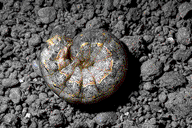|
The Native Garden
Preparing the Land
Weeding and Hilling
Saving Seeds
Regional Gardening
The Crops
Corn
Beans
Squash
Watermelon
Jerusalem Artichoke
Harvesting and Preserving
The American Crow
|
| The English colonist John White of Roanoke made a painting of the native town called
Secota. The scene shows a cornfield with a watch tower in it. A caption to an engraving of the painting mentions the fact that the watchman
"maketh continual cryes and noyse" to scare away the birds and beasts which could damage the crop. The Secota watch tower was built upon four large posts with a platform higher than the tops of the cornstalks. On the platform is a shelter of a half round form. |
 |
| Birds are damaging to the corn, especially crows and blackbirds. They are interested only in the seeds so protection is necessary at planting time and as the corn begins to ripen. Though crows might do damage to the corn, Indian people would not kill them because of the tradition of the Crow bringing the first corn and bean to the people from Kautantowit's field. Blackbirds cause more crop loss than any other animal. In order to prevent this kind of destruction, little watch houses were built in the fields in which the women or the older children stayed to scare away the birds.
A similar device was used by the coastal people of North Carolina in the late 1500's. The New England watch houses are not described, but may have been similar to the North Carolina type. Deer and other mammals would not be such a problem due to the fact that they would be eaten by humans. Other animals may have been somewhat of a problem, but certainly not as bad as the blackbirds. Woodchucks do some damage, but in the 17th century they also served as food for humans. Young boys and dogs may have hunted them, thus keeping their population down. Keeping the areas surrounding the cornfields clear of underbrush would have eliminated ground cover for rodents. The Native People did not fence their fields.
|
[NOTE: We have found that a mixture of black pepper, red pepper, and dry mustard sprinkled on the mounds will discourage woodchucks. Care should be taken that none of the spices get directly on the plants as this will burn them. The repellent should be sprinkled on after each rain until the plants are grown enough to be safe.]
|
|
 |
Cutworms are a threat to young corn plants.
These underground worms are aptly named for they can cut down the shoots causing great damage and loss. Pick them out of the ground by hand. |
Speaking of Cutworms....
"...they go out into a field or garden with a Birchen-dish, and spudling the earth about the roots, for they lye not deep, they gather their dish full which may contain about a quart or three pints, then they carrie the dish to the Sea-side when it is ebbing-water and set it a swimming, the water carrieth the dish into the Sea and within a day or two if you go into your field you may look your eyes out sooner than find any of them."
Author unknown. |
|
